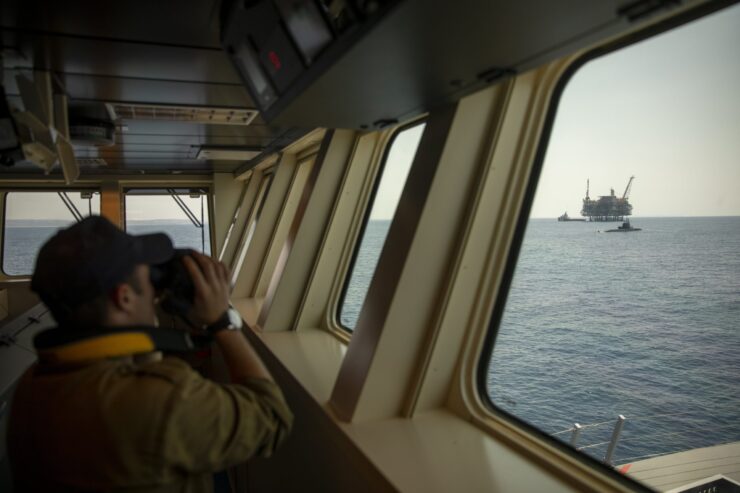
Tel Aviv: The US navy is enhancing its presence in the Red Sea as the Iranians through their Houthi rebels proxy, are increasing their activities in this main waterway mainly by fast boats attacks and mines.
The Central Command of the United States Naval Forces, the Fifth Fleet, announced on its official Twitter account that the two naval mine sweepers “USS Gladiator” (MCM 11) and “USS Sentry” (MCM 3) have already crossed the Bab al-Mandab strait on October 18. This is the first time in seven years that US naval mine sweepers have entered the Red Sea.
Last week, the UN Security Council warned of the dangers posed by the Houthi operations to shipping in the Red Sea. In recent months, many sources claimed that Iran is providing military equipment to the Houthi militia in Yemen, including tens of thousands of mines and naval missiles, in addition to remote-controlled boats carrying explosives.
Earlier, this month the Saudi-led Arab coalition in Yemen confirmed an increase in Houthi militia terrorist activity in the southern Red Sea and the Bab al-Mandab Strait. The coalition also said that it had destroyed 175 naval mines thrown randomly into the Red Sea by the Houthi militia in Yemen. The information indicated that the naval mines discovered were made in Iran. The Red Sea now sees a much greater presence of Israeli navy’s ships and the number will grow as the Iranian threats to shipping in this waterway also grows. The only danger is posed by Iranian speed boats, manned and unmanned carrying explosives. The presence of the Israeli navy in the vicinity of Iran is to deter it from any hostility against Israel.
In recent months, the Red Sea has seen some Iranian attacks on Israeli-owned cargo ships and some counter-attacks allegedly by Israel. “It is clear that a real war is fought over and under the waters of the Red Sea” an Israeli source said. The Israeli experts including a former commander of the Israeli navy, Vice Admiral (Ret.) Eliezer Marom said that the maritime threats posed by Iran are in the shape of commando operations, “They don’t have real modern combat ships but they have developed a fleet of deadly manned and unmanned combat boats”.
Israeli sources point to the fact that the Iranian navy is making a big effort in recent months to achieve a more aggressive capability with what it has in its inventory. The Iranians are training divers to use small home-built “Pocket Submarines” to enable attaching explosives to cargo ships and go back unharmed to small speed boats adapted to this mission.
According to a report in Israeli channel 12 a team of Iranian divers has been trained two months ago in Malta. The channel said the Iranians are believed to have chosen Malta as a training site, due to its proximity to Italy, which is developing modern diving systems and accessibility.
The Iranian have also sent two of their old warships to the Atlantic as what is considered a test to see how the Europeans and the US will act. The US and Israel are monitoring the actions of the Iranian navy in the Gulf and the Red Sea , to protect American and Israeli-owned cargo ships. The Iranian effort to create a presence in the Red sea, gulf, and the Atlantic is affecting the deployment of the Israeli navy. Equipped with very advanced SAAR 6 corvettes and Dolphin 2 submarines the Israeli navy according to sources is “deploying its vessels according to very exact intelligence”. The foreign press claimed that the Israeli navy has at least one submarine in the Gulf. The reports added that this submarine is capable of launching missiles to hit targets in Iran.
According to a report prepared by the Nuclear Threat Initiative (NTI) organization, the two branches of the Iranian Navy, the Islamic Republic of Iran Navy and the Islamic Revolutionary Guards Corps Navy, uses a diversified force of around 34 vessels. The Iranian Navy plays a crucial strategic role in Iran’s national security architecture due to the country’s dependence on the Persian Gulf for trade and security. Its naval forces also operate in the Gulf of Oman, the Caspian Sea, and the Indian Ocean. The report points to the fact that Iran is making a great effort to expand its submarine fleet.
According to the report, in June 2012, an Iranian official asserted that scientists were in “the initial phases of manufacturing atomic submarines”. In September 2017, Iran’s naval command said that the country’s nuclear agency was beginning to produce nuclear reactors for fuelling and propulsion systems. The report says that many analysts assert that manufacturing a nuclear reactor for submarine use is beyond Iran’s current capabilities and is simply a response to increased U.S. sanctions applied after the US withdrawal from the JPCOA.
The report points to the fact that actually, the main Iranian effort is to develop a two-seat submersible swimmer delivery vehicle (SDV)—designed by the Esfahan Underwater Research Centre. Israeli defence sources said that they have evidence about this Iranian effort “all the talk about big warships and nuclear-powered submarines is pure propaganda”. The Israeli sources add that the Iranians have now a “relatively” large fleet of these SDV’s and a fleet of small speed boats, some remotely controlled that have been used to attack commercial ships and in other cases to “harass” US navy ships.
While the overall picture of the Iranian naval force is not impressive, the US and Israel are taking unified actions to be better ready to act against Iranian aggression at sea .








